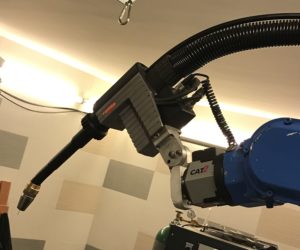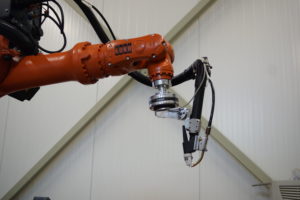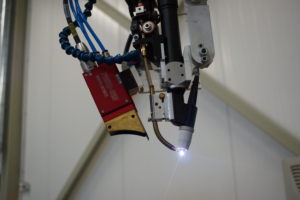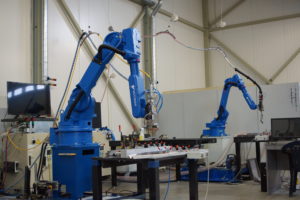ROBOTIC MIG - MAG WELDING SYSTEM
MIG – metal inert gas; MAG – metal active gas. It’s an electric arc welding method, using a wire electrode which is supplied through a welding gun. Them welding seam is obtained during the arc welding process of the wire and the edges of the welded metal pieces.
ROBOTIC TIG WELDING SYSTEMS
TIG (Tungsten Inert Gas) is a welding method which uses infusible (tungsten) electrode in the gaseous environment for welding with the arc, formed between the tungsten electrode and the welded piece. Welding features a sufficiently high welding quality, however slow welding speed is one of the main disadvantages of this method. Welding robots are not in great demand, as the quality of the welding seam considerably depends on the angle of the TIG electrode holder in respect with the piece.
ROBOTIC PLASMA WELDING SYSTEMS
Plasma welding is an intermediate welding method between the TIG welding and the laser welding. This welding method features a more concentrated directional electric arc, than that of the TIG method, which is significantly narrowed by the cooled gas tip – nozzle, which directs the plasma gas flow towards the welded piece. The arc is narrower and more concentrated, therefore this method is not as sensitive (to the increased gap between the tip and the piece), as the TIG.
ROBOTIC LASER WELDING SYSTEMS
Many different methods of metal welding exist, however the laser welding is the most precise. The laser source energy is concentrated by optical lenses to a precise surface area, therefore this welding method features a thin welding seam. After welding, no mechanical treatment or polishing of the welding seam is required, or the requirement is minimum, compared with other welding methods.



